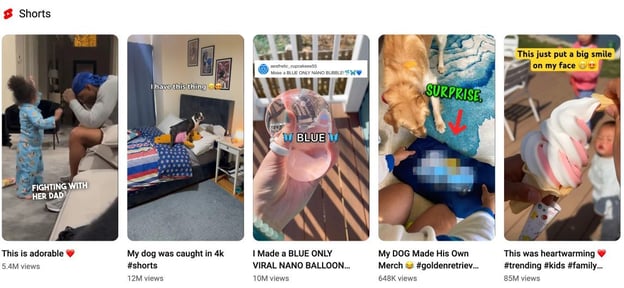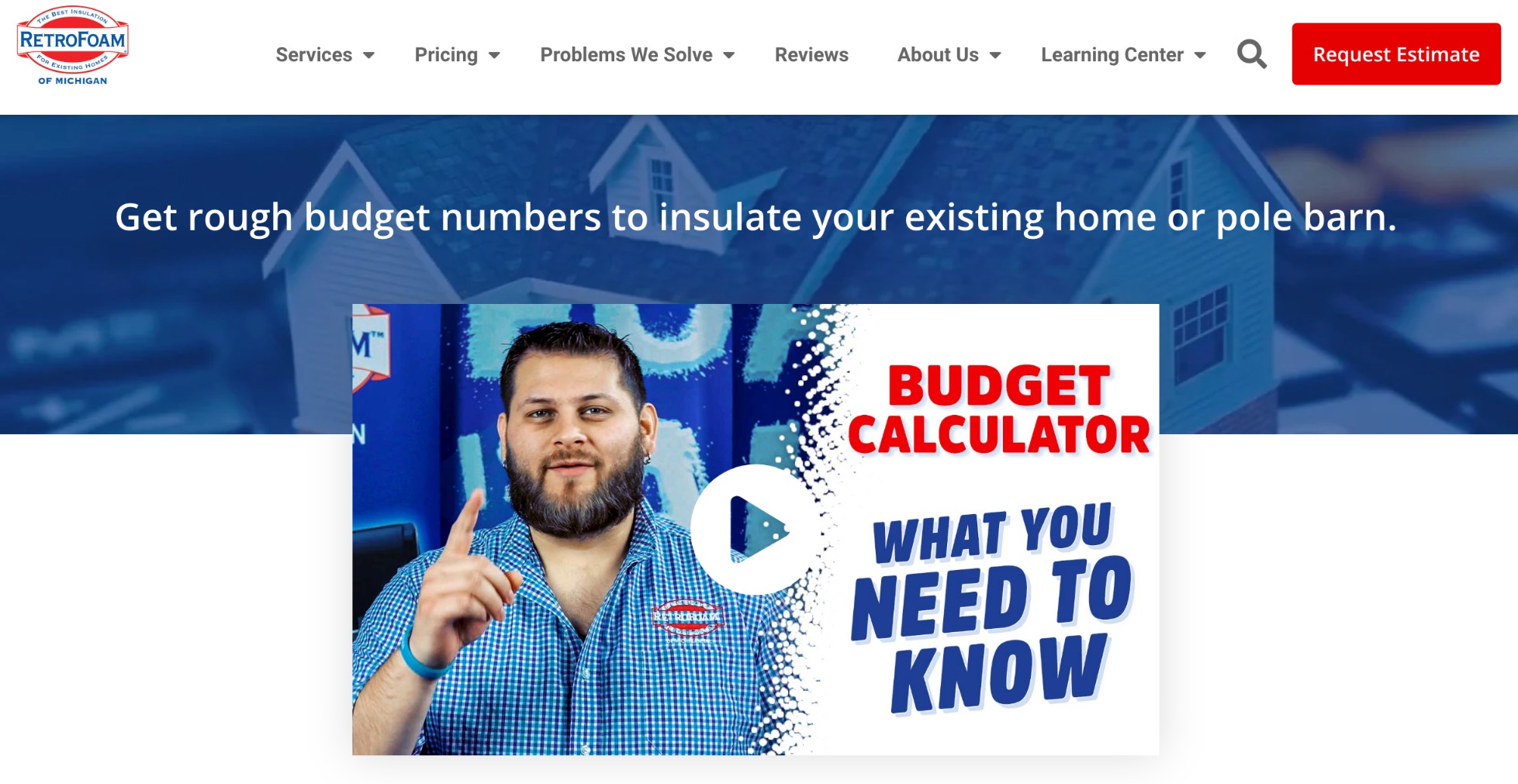- Learning Center
- Digital Marketing Strategy
- 8 Digital Marketing Trends You Cannot Ignore in 2025
- 8 Digital Marketing Trends You Cannot Ignore in ...
-
Search
- AI Chat
8 Digital Marketing Trends You Cannot Ignore in 2025
Last updated on November 20, 2025

At a Glance
Content marketing trends to watch for 2025
-
AI is becoming the foundation of modern marketing
-
Search is evolving, and SEO must evolve with it
-
Social media is becoming the new search engine
-
Short-form video is still dominating and evolving
-
Personalized, self-service experiences are raising the bar
-
User-generated content and influencer partnerships are fueling authenticity
-
Immersive and visual search experiences are changing buyer expectations
-
Trust-First Tactics Are No Longer Optional
When it comes to marketing, we’re used to hearing about the “next big thing,” only to watch it fade away a few months later. But sometimes, what starts as a trend becomes the standard.
Think about blogging. Or social media. Or email marketing. Each one was once considered a passing fad. Now, they’re foundational parts of how we connect with buyers.
That’s why it’s worth paying attention.
Digital marketing strategy is evolving fast. New tools, smarter buyers, and higher expectations are changing the game. The strategies that worked a few years ago are starting to lose their edge.
If you want to stay competitive, you need to understand where things are headed, and you need to know how to adjust your approach.
What follows isn’t a list of short-term gimmicks. These are real shifts we’re seeing across the industry. They’re backed by what today’s buyers actually want and what forward-thinking companies are already doing. So if you’re building a strategy that’s designed to last, these are the digital marketing trends to pay attention to this year.
1. AI is becoming the foundation of modern marketing
In 2025, AI is no longer the shiny new tool. Now, it’s part of the everyday workflow for high-performing marketing teams. What started with experimental content generators and basic chatbots has now evolved into full-scale integration across platforms like Google Workspace, Adobe, HubSpot, and Zoom.
We’re seeing AI used to improve everything from content ideation and video editing to search insights, performance reporting, and customer support. And the tools that are sticking around are the ones that make the work easier, faster, and more accurate, without replacing human creativity.
There’s still plenty of hype out there. New AI products are launching every week, and many won’t last. But the ones worth watching are those that actually improve your process and help you better serve your buyers.
This year, the smartest companies are no longer asking, “Should we use AI?” They’re asking, “Where can AI save us time, reduce friction, and help us build trust with our audience?”
That last part is key. AI should never replace real relationships. It should support them. The goal is to use smarter tools so you can focus on the human work that matters most, like teaching, listening, and earning buyer trust.
If you don’t yet have a company-wide AI policy, it’s time to create one. Here’s a great place to start: The AI Best Practice Guidelines Your Company Needs.
2. Search is evolving, and SEO must evolve with it
AI has triggered a major shift in how people search for and consume information online. In 2025, traditional search results are no longer the only destination. Tools like Google’s Search Generative Experience (SGE) and ChatGPT’s web-enabled answers are changing the way users discover content.
Instead of delivering a list of links, generative search creates summarized answers to your questions, often pulling from a range of sources without sending users to any specific website.
This means fewer clicks, fewer page views, and less predictable traffic for businesses that rely on search visibility.
At the same time, content creation has become easier and more widespread than ever. With AI tools generating blog posts, summaries, and FAQs in seconds, search engines are flooded with near-duplicate content.
As a result, it’s harder than ever to rank without a clear point of view or original insight.
These trends raise big questions:
- How do generative search tools decide what sources to reference?
- Will ad space in these summaries become the new battleground for visibility?
- Are users becoming more passive, relying on AI summaries instead of exploring deeper content?
No one has all the answers yet. But what we do know is this: SEO in 2025 is about more than keywords and backlinks. It’s about earning digital marketing trust through clarity, consistency, and expertise.
If your content offers real value, if it answers buyer questions better than anyone else, it still has a place in the new search landscape. Just be ready to shift your focus from traffic to trust, from clicks to comprehension.
Marketers who understand this shift and adapt accordingly will stay visible, even as the rules of the game keep changing.
3. Social media is becoming the new search engine
Social media isn’t new. But in 2025, it’s playing a very different role in how people discover, evaluate, and trust brands.
As generative search changes how users interact with Google, more buyers are turning to platforms like TikTok, Instagram, and YouTube to find information. Instead of reading articles, they’re watching short videos. Instead of clicking through a company’s website, they’re scrolling through comments and reviews.
At the same time, the rise of AI-generated content has left many audiences craving authenticity.
People want to hear from real humans. They want to see the faces behind the brand, get honest answers, and feel like they’re part of a conversation.
As Marcus Sheridan puts it, “The brands that win will be the ones who show up on social media as human, helpful, and relatable.”
For businesses, this means social media can’t be just a channel for promotion. It’s a key touchpoint for building digital marketing trust. A strong presence on the platforms your audience uses every day can influence buying decisions long before anyone fills out a form or visits your website.
If your team isn’t already creating content for social discovery, now is the time to start.
4. Short-form video is still dominating and evolving
Short-form video is no longer a trend. It’s the standard for how millions of people consume content every day.

In 2025, short-form video continues to outperform other media formats in both reach and ROI. Marketers report that quick, mobile-friendly videos consistently deliver the best results across platforms, from TikTok and Instagram Reels to YouTube Shorts and even LinkedIn.
These videos are typically less than 60 seconds, designed to capture attention immediately and deliver value fast.
Whether it’s answering a question, showing a behind-the-scenes moment, or offering a quick tip, short-form video is the format today’s buyers prefer.
It also fits the way people scroll. More than 70% of YouTube’s traffic comes from mobile users. The same is true across social platforms, where vertically shot, autoplay videos are pushed to the top of feeds and served algorithmically to interested audiences.
Short-form video is becoming a powerful tool to help build trust.
When real people from your team speak directly to buyers, explain your process, or share expert insights, you’re building credibility in the most personal way possible.
If your brand wants to stay relevant in 2025, short-form video should be a core part of your content strategy.
5. Personalized, self-service experiences are raising the bar
One of the most important digital marketing trends of 2025? Buyers want control, and they’re getting it.
Gone are the days when people were willing to fill out a form and wait for a sales rep to follow up. Today’s buyers expect your website to do the heavy lifting, offering a customized experience that answers their questions, recommends the right solution, and helps them decide when (or if) they want to talk to someone.
This shift is why interactive content and self-service tools are becoming non-negotiable.
We’re talking about things like:
- Price calculators
- Product finders
- Interactive quizzes
- AI-powered chat and recommendation tools
Take RetroFoam of Michigan, for example. Their website includes a pricing calculator tool that walks homeowners through a few simple questions, like ZIP code and building type, to deliver a tailored insulation estimate.

Even for people outside their service area, the tool provides value, education, and trust before a sales conversation even starts.
These tools improve conversion rates, boost engagement, and give buyers exactly what they want: a low-pressure, high-value experience that feels personal and useful.
If you’re looking to stay ahead of digital marketing trends in 2025, ask yourself: Are you helping your buyers help themselves?
Because the brands that make buying easy are the ones building trust.
6. User-generated content and influencer partnerships are fueling authenticity
In a digital world where buyers are inundated with polished ads and brand promises, trust has become the real differentiator, and people trust people more than they trust companies.
That’s why user-generated content (UGC) and influencer partnerships continue to grow as one of the most important digital marketing trends of 2025.
Whether it’s a customer sharing a quick product review on TikTok, an industry expert walking through your software on LinkedIn, or a behind-the-scenes Instagram Story from a loyal client, buyers are drawn to content that feels real.
This trend is about empowering your biggest advocates (your customers, partners, and employees) to speak honestly about their experiences. These perspectives add credibility and authenticity to your message in a way polished campaigns can’t match.
And it works.
- HubSpot’s latest research shows that influencer content sees 2x the engagement of traditional ads.
Influencer marketing is evolving, too. Today’s most effective influencers aren’t celebrities. They’re micro- and nano-creators who share specific knowledge with a niche, loyal audience. When these creators partner with brands they genuinely trust, the results speak for themselves.
If your digital marketing strategy for 2025 includes building trust at scale, make space for voices beyond your own. Invite your audience to participate. Feature your customers in your videos. Build partnerships with creators your buyers already follow.
In a sea of sameness, authenticity is what cuts through, and the most trusted brands are those that let others speak on their behalf.
7. Immersive and Visual Search Experiences Are Changing Buyer Expectations
One of the most exciting digital marketing trends this year is the shift toward immersive, visual, and intuitive search experiences. Thanks to advances in AI, AR, and mobile technology, the way people search for and interact with products and services is evolving rapidly, and marketers need to evolve with it.
Take visual search as an example. Tools like Google Lens and Pinterest Lens allow users to snap a photo of an object and instantly find it (or similar items) online. Whether it's a piece of furniture or a pair of shoes, visual search bridges the gap between discovery and purchase.
Similarly, voice search continues to grow as more people use smart devices to get quick answers without typing. According to Statista, more than 50% of U.S. households now have a voice assistant, and the number is expected to climb in 2025.
Meanwhile, AR (augmented reality) is transforming ecommerce and service industries. With platforms like IKEA Place, buyers can visualize how a product will look in their space before purchasing. Beauty brands like L’Oréal and Sephora let users "try on" makeup via their phones.
These tools highlight real shifts in how people prefer to explore, evaluate, and engage with brands.
If your content strategy is still limited to written copy and static images, you're going to fall behind. Today’s buyers expect experiences that are interactive, intuitive, and visual.
So, what should you do?
- Optimize for visual and voice search. Include alt text, schema markup, and clear visual metadata in your content.
- Experiment with AR experiences. If you're in ecommerce or home services, show buyers what your product or service looks like in their world.
- Think like a user. What would make their search journey easier, faster, or more immersive? Build for that.
As digital marketing trends continue to shift, the brands that thrive will be those that make the buying experience feel seamless, modern, and customer-first.
8. Trust-First Tactics Are No Longer Optional
Modern buyers are more skeptical than ever. They’re inundated with content. They’ve had bad experiences. And they know how to sniff out hype, half-truths, and shady data practices. In this environment, trust is the foundation of any successful digital marketing strategy.
To earn trust, companies need to commit to three key behaviors:
1. Prioritize transparency at every stage
Whether it's pricing, product comparisons, or the limitations of your service, buyers appreciate honesty. Brands that are upfront about what they do and don’t offer are more likely to be seen as credible. This also includes being transparent about how your tools work, how your pricing is structured, and what kind of results buyers can realistically expect.
2. Leverage social proof the right way
Reviews, testimonials, and case studies still matter, but only if they’re authentic.
However, overly polished testimonials feel fake, so make sure you highlight real results and name real people.
3. Adopt ethical data and privacy practices
Buyers expect brands to respect their privacy. That means clear opt-ins, no shady tracking, and a commitment to using data responsibly.
Tools like GA4 have made compliance easier, but the onus is still on marketers to build systems that put the user in control. Make it easy to adjust settings, opt out, or delete data. Respect builds trust.
As AI-generated content becomes more prevalent, human trust becomes your biggest differentiator. According to Edelman’s Trust Barometer, businesses are now expected to fill the credibility gap left by government and media institutions. That’s a massive responsibility, and a massive opportunity.
The companies that take this seriously will win. They’ll rise above the noise, cut through the clutter, and become the voices their audiences turn to again and again.
Because if there’s one constant across all digital marketing trends in 2025, it’s that the brands that buyers trust will always come out on top.
Stay Ahead by Staying Human
Digital marketing trends will always evolve. New technologies will emerge, platforms will shift, and buyer behaviors will change. But one thing remains constant: people want to work with brands they trust.
That’s why the most successful companies are deepening trust, delivering value, and aligning their teams around what really matters.
Whether it’s leveraging AI to better serve your audience, adopting self-service tools that empower buyers, or using short-form video to humanize your brand, every trend worth following leads back to trust.
Want to become the most known and trusted brand in your space?
Learn more about how we help businesses use the Endless Customers System™ to grow and scale with trust at the core.
Because the companies that win are the ones who listen best, teach first, and show up consistently for their customers.

This article was produced as a collective effort of the IMPACT Team and is regularly updated.
8 Digital Marketing Trends You Cannot Ignore in 2025
Share
NEED HELP WITH YOUR MARKETING STRATEGY?
If you’re looking to take control of your sales and marketing with a proven system built for the age of AI, IMPACT can help. We can guide you on how to control your growth, stop relying on agencies, and become the most known and trusted brand in your market.
NEED HELP WITH YOUR MARKETING STRATEGY?
If you’re looking to take control of your sales and marketing with a proven system built for the age of AI, IMPACT can help. We can guide you on how to control your growth, stop relying on agencies, and become the most known and trusted brand in your market.